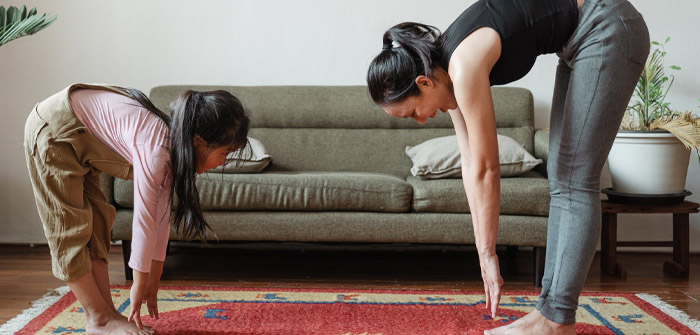(Photo | by Ketut Subiyanto from Pexels)
When COVID first began closing the doors of Central Oregon businesses in March, we never imagined how difficult it would be to assimilate. Yet here we are. We were actively trying to make lemonade out of lemons.
We live in Central Oregon for the fantastic lifestyle it provides. The abundance of recreation at our fingertips draws tourists from across the globe. But we are also creatures of habit. We like our routines — especially when it comes to exercise. While we don’t know the future, as we near fall, it is critical to consider how to stay active in this new world.
Physical activity is one of the most important things you can do for your health. It reduces your risk for various health conditions, including cardiovascular disease, diabetes and some cancers. It also strengthens bones and muscles and can slow the loss of bone density that comes with age. For older adults, physical activity can reduce the risk of falls and injuries from falls and can increase your chance of a longer life.
Anyone can do it, regardless of age or physical ability—the activity or level of activity changes. People with functional limitations have been especially challenged due to COVID restrictions. Some therapeutic activities, such as swimming and water aerobics, have stopped or been reduced due to restrictions and availability limitations. But there are options to keep active, and as you plan how you are going to invest in your health this fall and winter, we want you to consider the following five tips.
Whatever you do, keep moving. Movement increases the lubricating fluid that transports nutrients throughout the body to promote tissue healing. Once you stop moving, your range of motion is reduced. Find another way to stay active while resting the injured body part. If you are concerned about what you can do to safely move, schedule an evaluation with a physical therapist who can provide recommended exercises to keep you active.
Invest or rent exercise equipment. At-home gym equipment purchases have skyrocketed. Consider your options if you are looking for a way to stay active and get your heart rate up without risking exposure. From free weights to spin bikes, trainers, and treadmills, you can enjoy many benefits of the gym from home. It is essential to find the positives and negatives of this new reality. If your health is suffering because of reduced or no activity, it may be time to buy.
Try online classes. If you are like us, you enjoy the workout and the social aspect of going to the gym. Online classes can help address this partially by giving you a workout that gets your heart pumping while keeping you safe. Online classes are available in abundance. Local fitness centers and gyms provide a variety of class options to meet the individual’s diverse needs.
Start walking. We have some beautiful hikes here in Central Oregon that are suitable for a variety of skill levels. A 2020 study from the Journal of Strength and Conditioning Research found that you only burn 20 percent fewer calories walking than running! Walking also improves brain health, memory, energy, immune system and cardiovascular health. It can also reduce pain. Don’t have time to get out on the trail? Go for a walk in the park, along the river or in your neighborhood. The point is to get outside and move. If you are going to be in an outdoor place where social distancing will be difficult, wear your mask.
You don’t have to live with pain. If pain is keeping you from doing the activities you want, help is available. There is a reason why physical therapy is the first line of defense in treating many conditions. When appropriately applied, physical therapy can help people stay active for life. “Physical therapy is a discipline that successfully treats many types of ailments,” said Barrett Ford, PT. “A physical therapist’s scope of practice can range from cardiopulmonary and neurological conditions to women’s health and pediatrics.”





